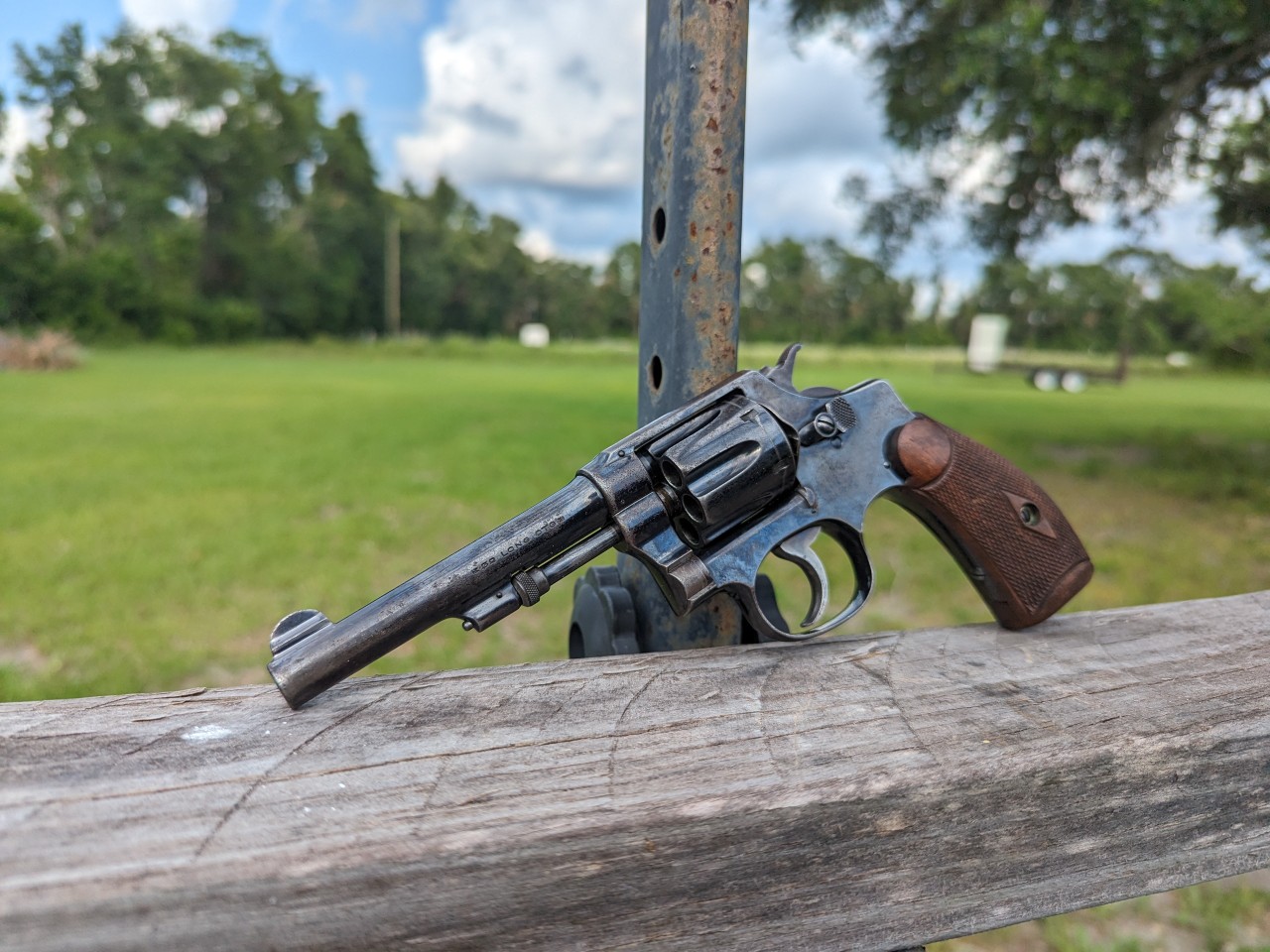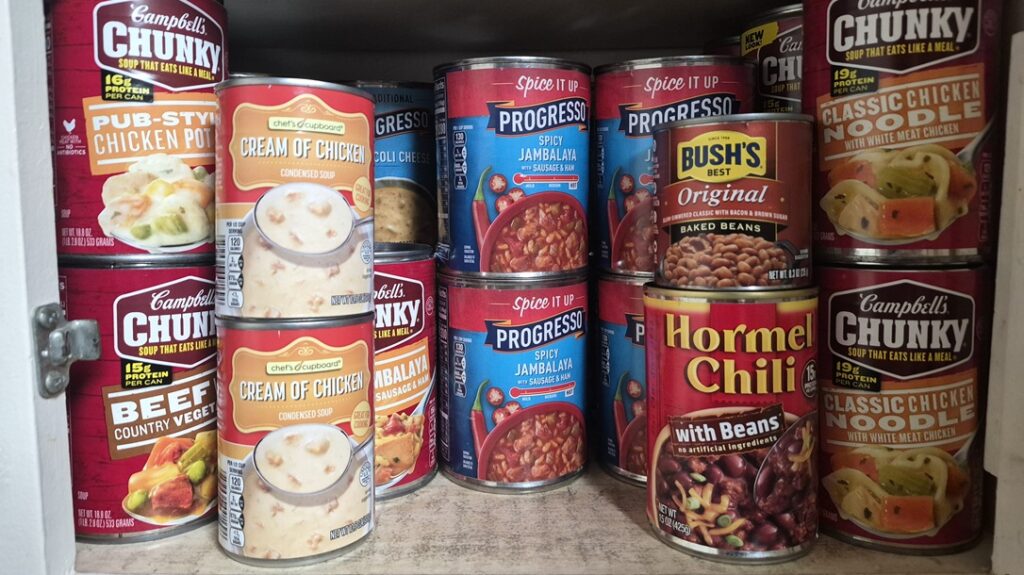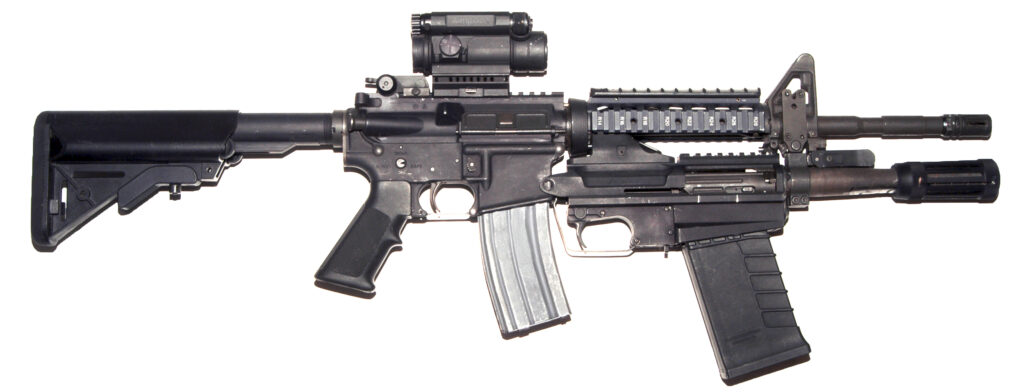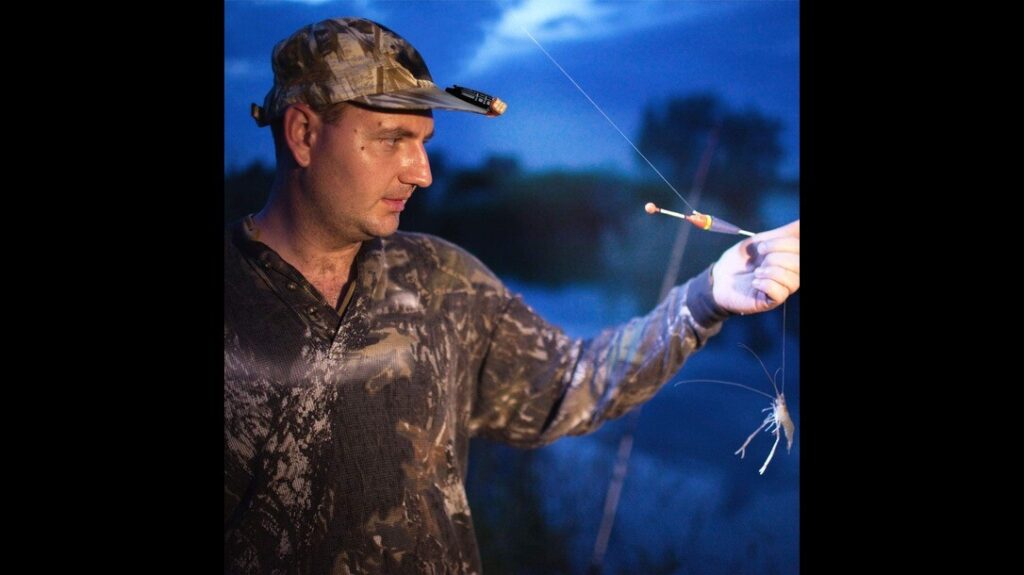J-Frame, K-Frame, LMNOP frames, what does it mean? Smith & Wesson has standardized its various frame sizes under different alphabetical initials. This standardized naming method has become almost universal amongst revolver enthusiasts. Colt, Taurus, Ruger, and the like won’t ever call their revolvers K-Frames or J-Frames, but the enthusiasts will. These frame sizes constantly reference revolver sizes, but what do they mean? Are you up to date on S&W frame sizes? If not, you come to the right spot.
M-Frame
The M-Frame series is one of S&W’s forgotten frame sizes. This tiny frame design was their smallest hand-ejector model produced from 1902 to 1922. They sold this seven-shot .22 S&W Long rimfire revolver as the LadySmith. This was the only M frame produced, but the Ladysmith title lived on and has graced both semi-autos and J-frame revolvers.
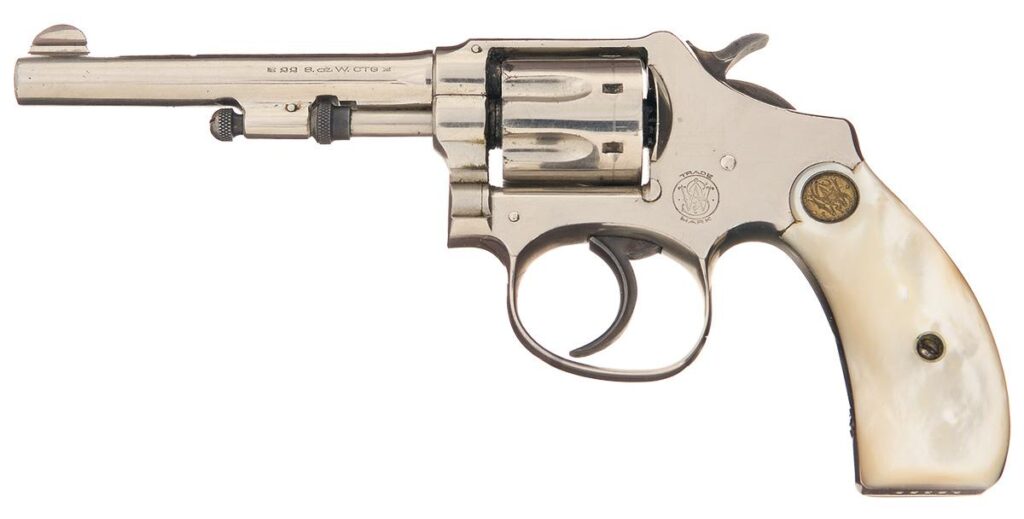
Advertisement — Continue Reading Below
I-Frame
I-Frames were the earliest frame sizes. In fact, I-frame guns existed before they were called I-Frames. This frame size is bigger than an M and smaller than a J. This was the first hand ejector produced by S&W from 1896 to 1960. These revolvers chambered cartridges like .32 S&W, .38 S&W, and .22 long rifle.
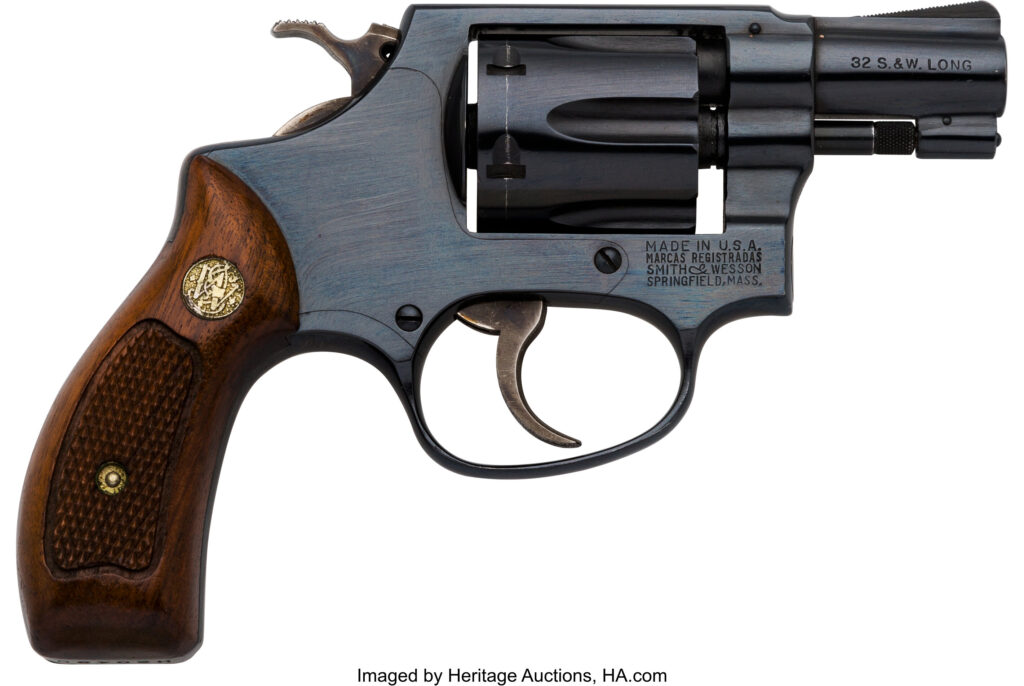
J-Frame
J-frames dominate the concealed carry market for revolvers. They are slightly larger than I-frames, were introduced in 1950, and remain in production. The little J-frame has seen its fair share of calibers, with the most common being .38 Special. This frame size has numerous variants with different materials ranging from steel to polymer. It’s likely the most popular frame size produced these days.
Advertisement — Continue Reading Below
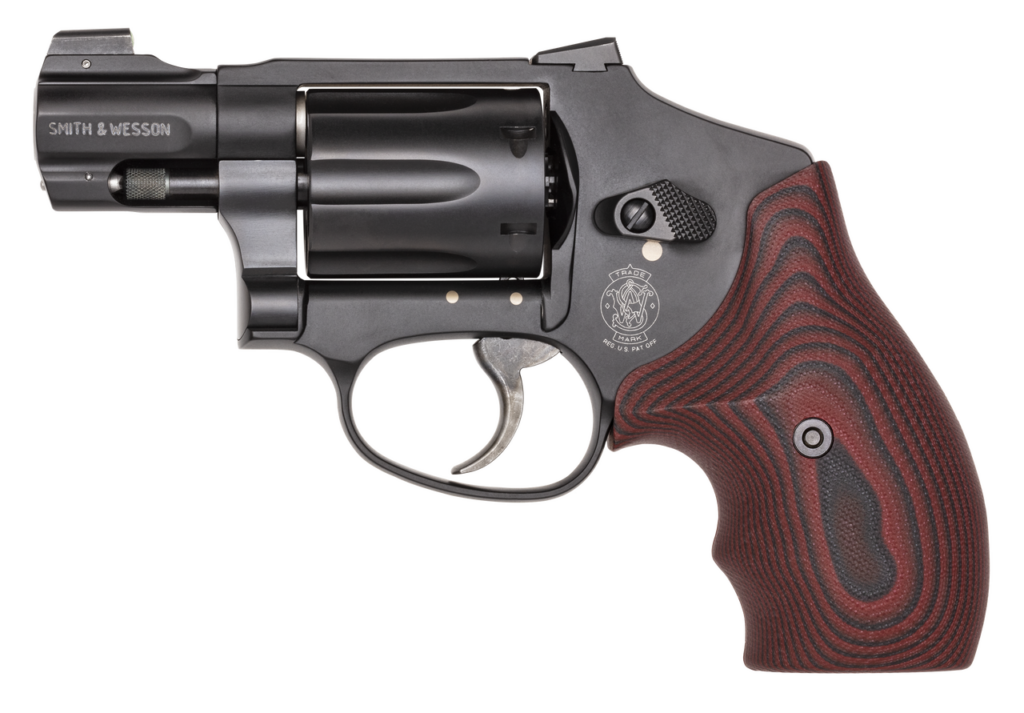
C-Frame
Another forgotten frame size is the C-frame. This experimental revolver size was designed to compete directly with the Colt Detective special. It had a six-shot capacity and used a J-frame combined with a K-frame cylinder to provide a compact, six-shot revolver. This frame size was produced in 1973 as the Model 73, and only 5,000 were produced. Due to safety concerns, they were destroyed, and only roughly 20 are left.
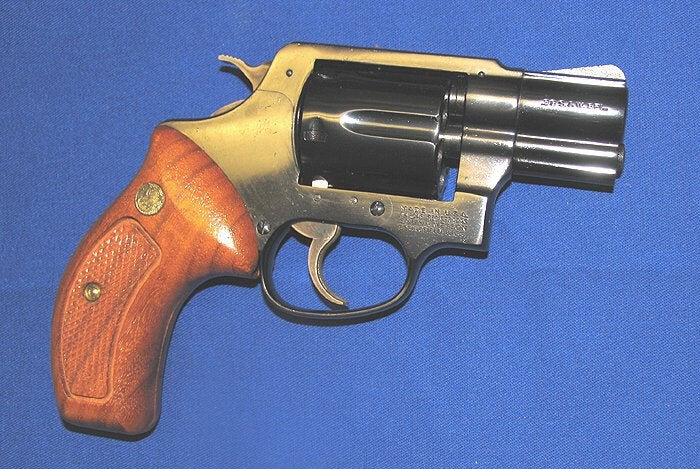
Advertisement — Continue Reading Below
K-Frame
The K-Frame is the famous medium-frame revolver size. These guns began production in 1899 as the M&P guns. The K-frame became the duty-sized revolvers for generations of police officers. The most popular chambering is the .38 Special. Calibers like .22 LR and .22 Magnum are also popular, and target models in .32 S&W Long were created. S&W produced .357 K-frames, but they weren’t designed for long-term use with the powerful magnum cartridge.
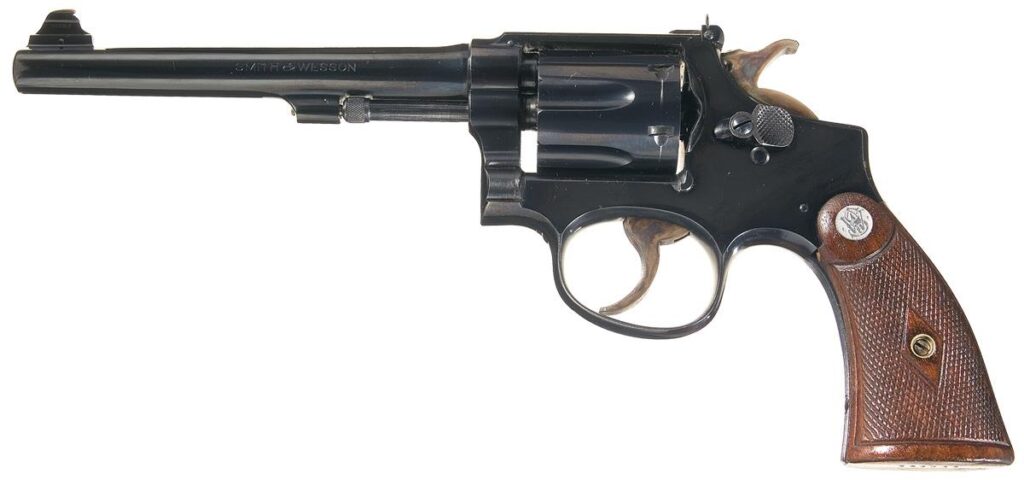
L-Frame
L-frame revolvers were developed due to law enforcement’s demand for a more stout and sturdy duty revolver that could handle a full diet of .357 Magnum cartridges. The L-frame is larger than the K-frame but still falls into the medium-sized frame designation. These beefed-up frames accommodate powerful .357 magnum loads, and their slightly larger design allows for seven shot cylinders for .357 Magnum and are strong enough to handle .44 Magnum.
Advertisement — Continue Reading Below
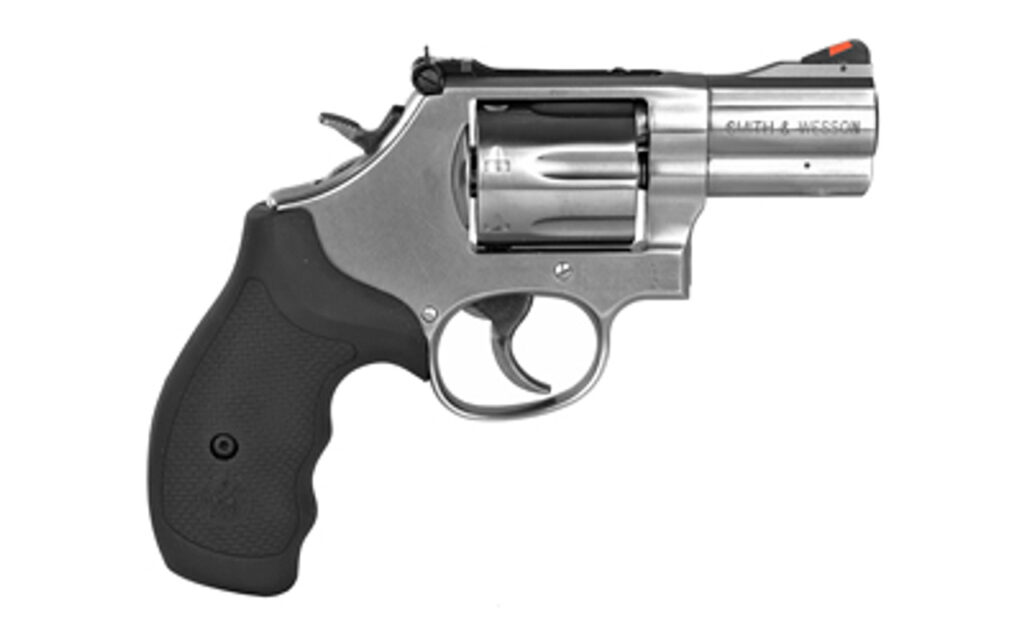
N-Frame
S&W produced the N-frame size to accommodate larger bore .44 and .45 calibers. This frame size was introduced in 1935 and remains in production. The big guns could handle six shots of .44 Magnum and .45 Colt and were the first guns to handle the .357 Magnum. They are known for their large grips and heavy design but also for being stout and durable. Their large frame sizes allow for up to 8 rounds of .357 Magnum or six rounds of big bore cartridges like .44 Magnum.

Advertisement — Continue Reading Below
X-Frame
X Frame is where big got even bigger. When S&W got into the .460 S&W Magnum and .500 S&W Magnum cartridges, they had to build an even bigger frame. These were introduced in 2003 and are absolutely massive guns that chamber massive rounds. The X-Frame series are some of the largest production revolvers in the world. They are used almost exclusively for hunting and causing lifelong wrist pain.
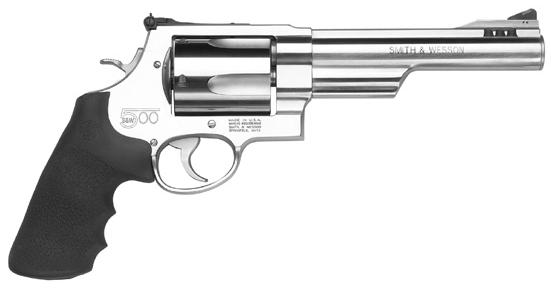
Z-Frame
The Z-frame is a weirdo. The only Z-frame is the S&W Governor, a 410 revolver. It features the grip from a K-frame but a massive frame to accommodate 3-inch .410 shotgun shells. It’s a six-shot revolver and stands out due to its length, which is more than its overall frame size.
Advertisement — Continue Reading Below
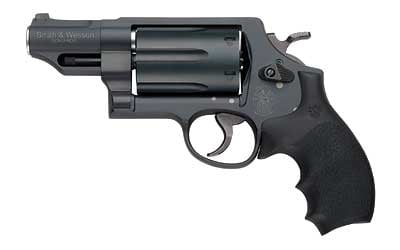
Getting In Frame
Why each letter is used and why they aren’t in alphabetical order is lost to me. It admittedly does seem somewhat random. Now you know which letter means what, and hopefully, you’ve even picked up a little S&W history along the way. Personally, if you can, pick up an I frame in .32. They are joyous guns to shoot. What’s your favorite frame size?
